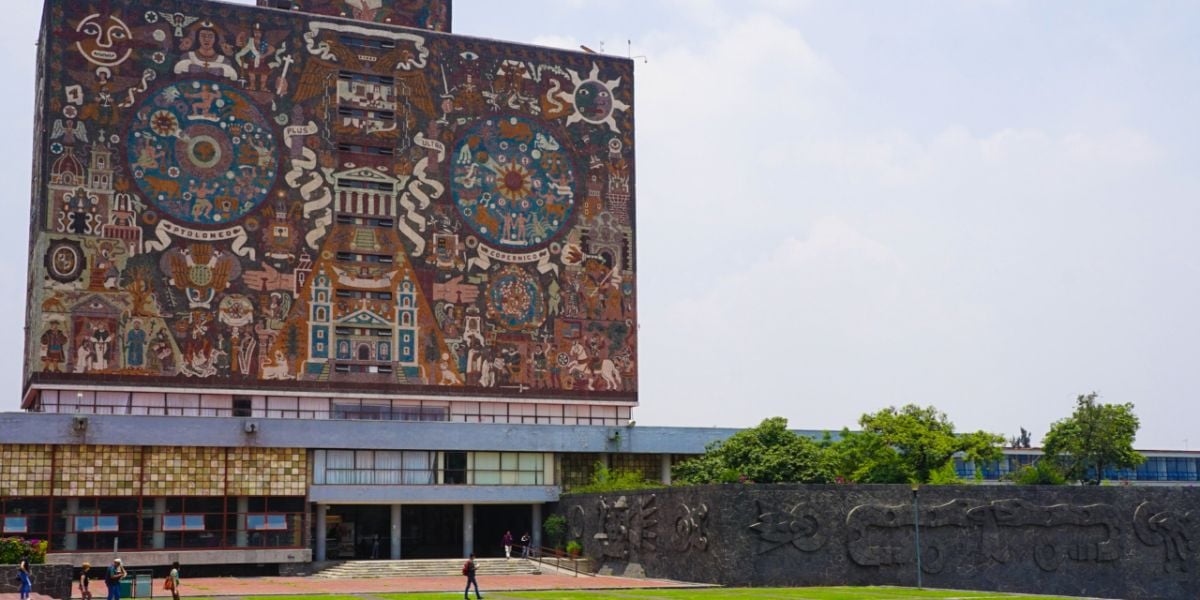
If you're planning to move to Mexico with your family or choose to study there, here is all you need to know about schooling and the higher education system.
Primary, secondary, and high school in Mexico
The process for enrolling your children in grade school begins with the immigration office. Before attending school in Mexico, they must first become temporary or permanent residents. Here you can find more information about visas for Mexico.
Once they have the Mexican residence card, you can apply for their CURP number at a government office. The CURP (Clave Ãnica de Registro de Población, or the Unique Population Registry Code in English) is an identification number for all citizens and residents. It is a requirement for children to enroll in Mexican primary and secondary schools. Find out how to apply for the CURP on this website (in Spanish).
Other requirements may be a comprobante de domicilio, which is a proof of residence like an electricity bill, and the child's most recent report card, translated to Spanish, so the school administration will know in which grade the child should be placed. In a private school, there will also be tuition fees. It's a good idea to visit the school as soon as possible, both to check the requirements and confirm that it has enough space for a new student.
In most cases, enrolling in high school is more complicated, and the exact procedure varies depending upon the state and municipality of the school. Along with the exact enrollment requirements in primary and secondary education, the high school may also request that the student's previous studies be revalidated, which means either a person at the school or a third party will research the courses and find their equivalents in Mexican educational institutions.
There will also be fees for any high school, public or private, because only primary and secondary school are considered basic education in Mexico, which is guaranteed to all and funded by taxes. Therefore, visit the high school first to receive specific information.
Higher education in Mexico
Requirements for attending university in Mexico are different at each institution. A crucial first step is contacting the university or checking out its website.
In general, the student will need the originals of their birth certificate and all documents from previous educational institutions, such as certificates and transcripts. Contact previous schools for these originals, even if you already have them, because it is a good idea to have a backup. In most cases, these documents will also need to have official certifications called apostilles. They are usually inexpensive and relatively straightforward to get, but do it before you come to Mexico to avoid paying (and waiting) for courier services.
Another requirement is that previous studies are revalidated, as for the high school described above. If the university requests that a third party does this, ask them to recommend one, so you know that they will accept it later.
When it comes to tertiary studies, everyone should find out in detail about the institution in which to dedicate part of their life to professional development.
Within the Mexican educational system, education is distributed between the state and autonomous public institutions, as well as private institutions with open registration. The set is usually divided into two considerable sectors: university and technological, and some provide a large sum of professional careers in different areas.
Some institutions have fewer than 1,000 students, while others have more than 100,000, with the largest institution reaching 250,000. Almost all offer diplomas and bachelor's degrees, but very few offer graduate degrees.
Do you want to study in Mexico?
Discover nine popular universities in Mexico and take a look at the degrees they offer to find out which one is the most suitable for you.
National Autonomous University of Mexico
This university has established itself as the main one in the country for several years because it offers many benefits to students.
About 131 academic and engineering courses are offered. The central campus is located in the Capital, although it extends through several states and throughout the country. Therefore, UNAM is also the most popular university in Mexico. In the previous process, less than 9% was accepted, and the applicant had to provide up to 116 correct answers out of the 120 of the accepted exam.
Monterrey Institute of Technology and Higher Studies (ITESM)
Founded in 1943, this university has provided numerous professional and academic degrees since its inception. In addition, it has 31 locations in Japan and an extensive virtual library. With a new motto implemented in 2019, this university stands out in its focus on business, emphasizing the effectiveness of its students in concentrating on their company. Generally, most of the work offered is linked to technology, engineering, computer science, electronics, humanities, and biomedicine.
University of Guadalajara
This university was founded in 1925 with this name, but there are data that it has been operating since 1521, known as "Santo Tomás". Under the motto "think and work." It contains an incredible 3 million graduates in all the disciplines studied in any of the 15 campuses that make up this university. Currently, it has more than 20,000 employees.
Anahuac University
Anáhuac is a chain of private universities with the largest size that competes worldwide, located in the United States, Chile, Italy, Mexico, and more. Around 50 professions are taught in each of the CDMX headquarters, Querétaro, Oaxaca, Puebla, Cancún and Xalapa. According to QS World University Rankings 2022, Universidad Anáhuac México is one of the top 3 private universities and one of the top 4 institutions in the country.
Iberoamerican University IBERO
Known as “La Ibero,” this is a private university commissioned by Jesuits from Mexico City, and it consists of two campuses, Tijuana and Mexico City.
All campuses share the same philosophy of education, although, on the other hand, they are independent institutions in terms of administration, finances, and work.
This has resulted in each division successfully dealing with the peculiarities and social, economic and environmental challenges of the areas in which each of them is located.
National Polytechnic Institute (IPN)
Commonly called a polytechnic, it is an institute in Mexico dedicated to research and education between high school and postgraduate. One of the oldest in the country. It was founded in the capital in 1936 during the administration of President Lázaro Cárdenas del Río.
This public institution contains 19 secondary technical institutes, about 27 primary schools, 20 centers dedicated to research, and another 16 for continuing education.
Specialized in 3 competitive sectors, such as mathematics, engineering, and physics, as well as new technologies and medicine, it has been ranked 3rd among the best universities in engineering and technology in 2019.
Located in Mexico City, all of its technology courses are taught in Spanish. However, it also has several English courses with limited seats.
Autonomous Technological Institute of Mexico (ITAM)
This institute provides a rigorous undergraduate program with international standards in academic terms, a factor that dazzles and promotes the arrival of many highly competitive professors and students around the country.
All its programs have a full-time average, both for teachers and students, offering a challenging study plan that guarantees excellent international competitiveness for its graduates.
Autonomous Metropolitan University (UAM)
This public university has around 45 years of experience, and it also ranks as one of the most important in Mexico due to its wide range of undergraduate and postgraduate courses. With more than 60,000 students and a flexible model of constant innovation, it governs its standards for advancing higher education and connects with its social environment. In addition, its potential is reflected by its more than 3,000 scholarship holders and a high percentage of its full-time and postgraduate students.
Chapingo Autonomous University
It occupies a significant position in the leading agricultural universities in Mexico, with 167 years of existence.
Prioritizing the indigenous youth, it offers free learning to youth in all states of the country. One of the most appreciated treasures of the university is the presence of 76% of the indigenous language of Mexico.
It has the second-best agricultural and forestry curriculum in Mexico, one of the 10 and 5 best public universities in the country in the World QS World University Ranking.
With a scope of 27 bachelor's degrees, 14 master's degrees, and 12 doctoral programs, this university is located in Texcoco, Mexico. It is also home to a Museum, the National Museum of Agriculture, which studies the development of the Mexican agricultural sector from its pre-Hispanic beginnings to the present. It truly is a valuable learning resource for your college students. Its popularity is also due to the elaborate murals painted by Diego Rivera.
Spanish courses in Mexico
Many people come to Mexico for short-term Spanish immersion courses. While they may not be as affordable as those in some parts of Central or South America, such as Guatemala or Bolivia, you'll find that they are much cheaper than a similar course in western countries, and of course, residing in a Spanish-speaking country is an added benefit to learning the language.
Look for small, independently-run Spanish schools in tourist areas. These schools usually offer one-on-one instruction, homestays, and various stimulating activities. You may also look on message boards in hostels.
Another option is to visit language centers in major public universities. Spanish courses in these centers are designed for their exchange students, but they usually accept anyone. Unlike private schools, these are typically group classes with a fixed curriculum. UNAM in Mexico City, for instance, offers Spanish courses at its CEPE, Centro de Enseñanza para Extranjeros (Learning Centre for Foreigners).
About a quarter of the world's Spanish speakers live in Mexico. Likewise, Mexico City is one of the cities where most of the world's Spanish speakers are concentrated. Therefore, there is no doubt that it is one of the best places to study the Spanish language.
As we mentioned, UNAM is the most important in Mexico and offers one of the best Spanish as a foreign language programs through the Center for Foreign Education (CEPE). This division is intended for adults and has the possibility of being studied both in the university city of Mexico (CU) and in the Polanco area.
It has three blocks, and in addition to learning the language, you will acquire an excellent knowledge of Mexican culture. With a budget of around USD 420, you will complete the academic objective in 126 hours distributed in about six weeks, which results in 21 hours per week.
Two diploma courses and a postgraduate specialty are available for those who want to concentrate on being teachers of the language as a foreign language. International students will be able to take three exams and obtain a certificate in the language.
Within these levels, students will begin their journey from the first two beginner levels, through intermediate to advanced, from developing communication skills by sharing essential information to gaining confidence through the exchange of daily life at different times.
The trajectory continues with the creation of experiences and situations holding broad conversations on various topics. While its variety expands as the student advances, fluid interaction is sought with the realization of descriptions in abstract and more complex issues.
Its administration offers two different modalities, and one provides 64 hours in 2-hour sessions from Monday to Friday at a price of around USD 310.
On the other hand, the course can be taken in more detail in duration offered that reaches 128 hours, from Monday to Thursday, with a price of around USD 630.
Other courses in Mexico
Public universities are also a good resource for finding adult-education courses on a variety of topics, such as cooking, traditional sewing and weaving, or other cultural studies. Every major Mexican city has a public university, and most have a unique center for these types of courses. They are usually quite affordable, and not only are they an excellent way to learn a new skill, but they are also great for making new friends. Visit the admissions office of a major public university to ask for information about its cultural center (centro cultural) or department of cultural diffusion (difusión cultural).
Good to know:
If you are a member of ISIC, you have some discounts in Mexico on car rentals and hotel reservations! Also, ask museums for a discounted rate by showing your student ID.
Useful links:
UNAM Learning Centre for Foreigners
QS World University Rankings 2022
Academia Mexicana de la Lengua
UNAM
Tecnológico de Monterrey
Welcome to The University of Guadalajara
Universidad Anáhuac
IBERO
Instituto Politécnico Nacional
ITAM
UAM. Universidad Autónoma Metropolitana. Home.
Universidad Autónoma Chapingo
We do our best to provide accurate and up to date information. However, if you have noticed any inaccuracies in this article, please let us know in the comments section below.








